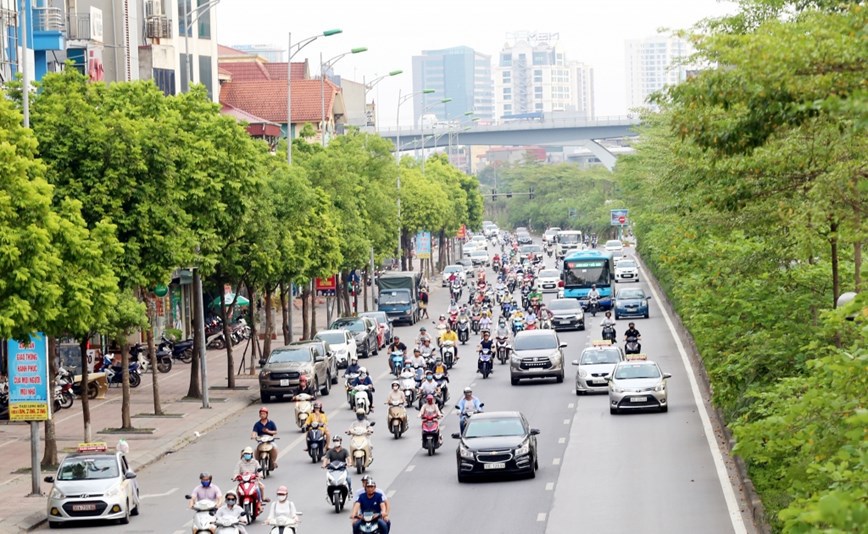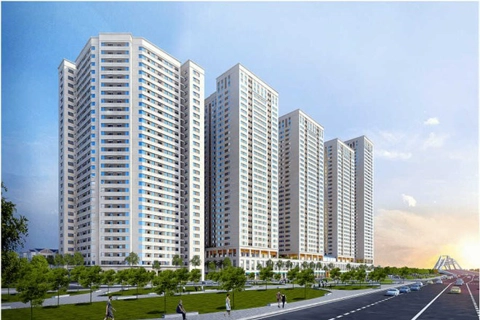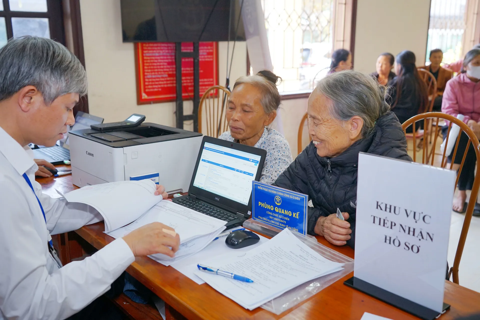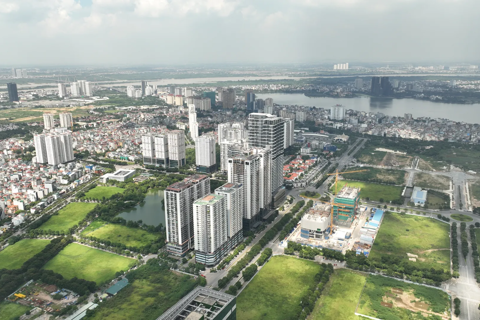Hanoi determined to address traffic congestion
The city applies information technology to traffic management and administration, focusing on deploying intelligent traffic systems.
Hanoi continues to focus on tackling traffic congestion, a longstanding issue during the capital’s urbanization process.
| Traffic in Long Bien District, Hanoi. Photo: Pham Cong/the Hanoi Times |
With a vision for 2050, Hanoi's focus is to ensure that 20-26% of the central urban area is devoted to transport and urban development, according to Hanoi's Transport Planning to 2030.
In this regard, the city aims to allocate 3-4% of the land for static traffic works and places a strong emphasis on developing the public transport system so that it can meet 50-55% of the urban transport demand in the metropolitan area by 2030 and 60-70% after 2030, effectively tackling traffic congestion.
In recent years, the city has made significant investments in road infrastructure, resulting in the completion and operation of several key projects. These include the construction of the Nga Tu So - Nga Tu Vong section of the elevated Ring Road No.2, the Le Van Luong underpass, and the Chua Boc - Pham Ngoc Thach overpass.
A comprehensive multimodal public transport network has also been established, with notable projects such as the Cat Linh - Ha Dong light railway, which is already operational, and the ongoing construction of the Nhon - Hanoi urban railway line.
The bus network covers 30 districts, extending services to 512 out of 579 communes, wards and townships, and connects with neighboring provinces such as Hung Yen, Bac Ninh, Bac Giang, Hai Duong and Vinh Phuc.
Tran Huu Bao, Deputy Director of the Hanoi Department of Transport, said that despite efforts to reduce traffic congestion in Hanoi, the situation remains complex due to a significant increase in the number of vehicles operating in the city and the limited amount of land allocated for traffic.
Recent statistics show that the capital has more than 7.9 million vehicles, including 1.1 million cars and 6.6 million motorcycles. The average annual growth rate for cars has exceeded 10% between 2019 and 2022, while motorcycles have seen a growth rate of over 3% per year.
Moreover, about 12 million vehicles from other provinces and cities ply Hanoi's roads. The land area allocated to transport for new urban construction in Hanoi is only about 10.3% of the total, with an average annual growth rate of only 0.26-0.3%. The land allocation for static traffic is less than 1%, and public transport ridership is growing at 18.5%.
"These factors contribute to the inevitable occurrence of traffic congestion," said Bao.
In response, Bao said the city has invested in a comprehensive road infrastructure based on the approved master plan, in which priority has been given to the completion of ring roads, especially the construction of Ring Road No.4, which aims to expand the city's development area.
Major axes such as National Highway 1, National Highway 6, West Thang Long axis, and connecting roads and bridges across rivers will also be built to improve connectivity between different areas. This approach serves as a fundamental and sustainable solution, he said.
In addition, Bao said the city expects to maintain and repair the existing traffic infrastructure to ensure its quality and safety for people and vehicles.
"Scientific and efficient traffic organization will be implemented to maximize the capacity of the current traffic system," he said.
Another solution mentioned by Bao is the synchronous development of various forms of public transport by incorporating the Transit-Oriented Development (TOD) model into urban planning.
In this regard, Bao said the city would effectively manage the Cat Linh-Ha Dong urban rail line and soon launch the Nhon-Hanoi station.
"The bus network is continuously improved to enhance its quality and efficiency, moving toward an advanced, civilized and environmentally friendly model. The gradual introduction of clean energy buses according to the approved roadmap is also part of this strategy," Bao said.
In the long term, Bao said, the city is applying information technology in traffic management and administration, focusing on deploying intelligent traffic systems. This approach is seen as a breakthrough solution.
"Efforts are being made to improve the effectiveness of promoting and disseminating traffic laws, raising awareness among road users, and cultivating a traffic culture. This is a fundamental and long-term measure to ensure road safety," he said.












